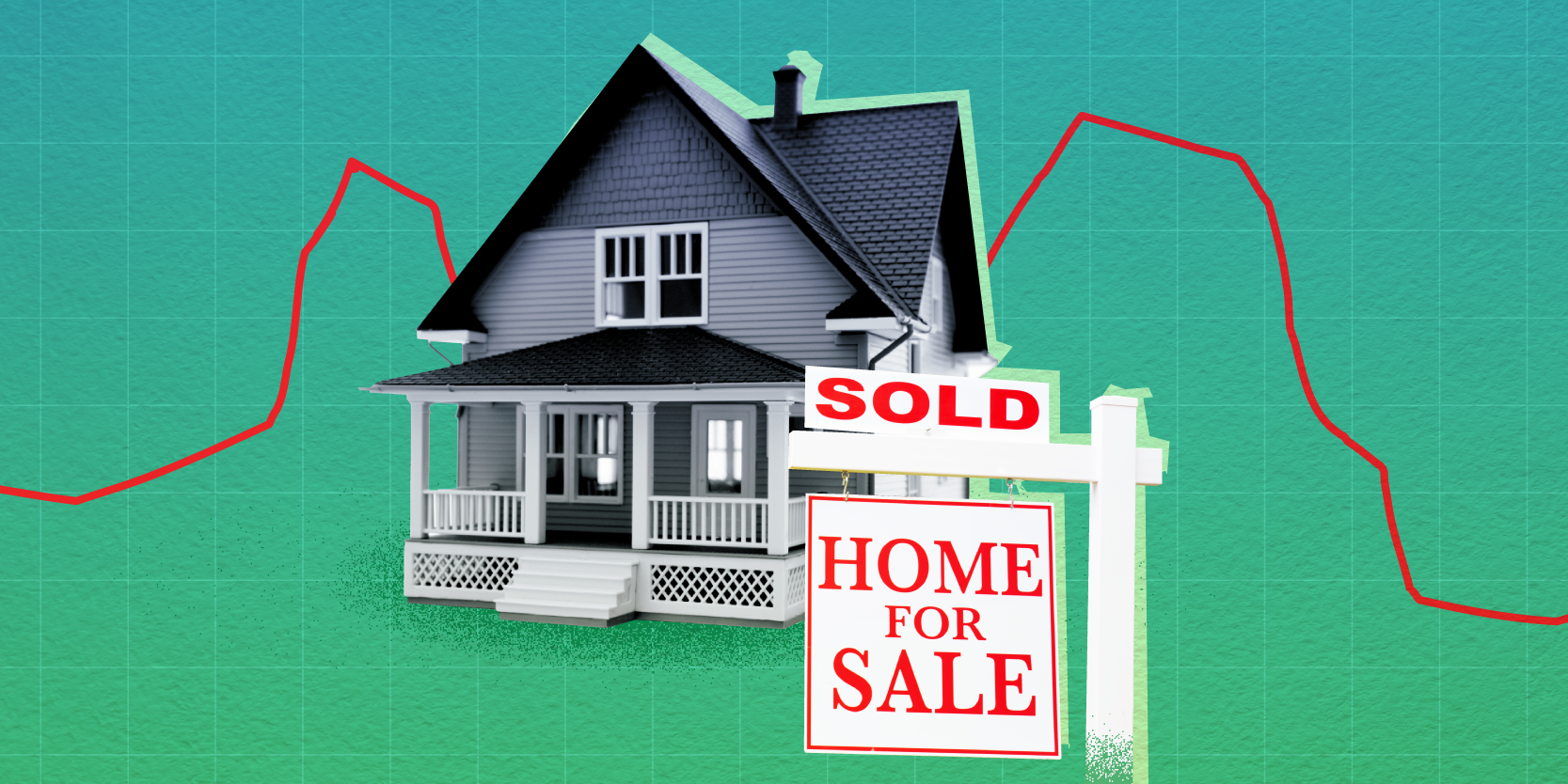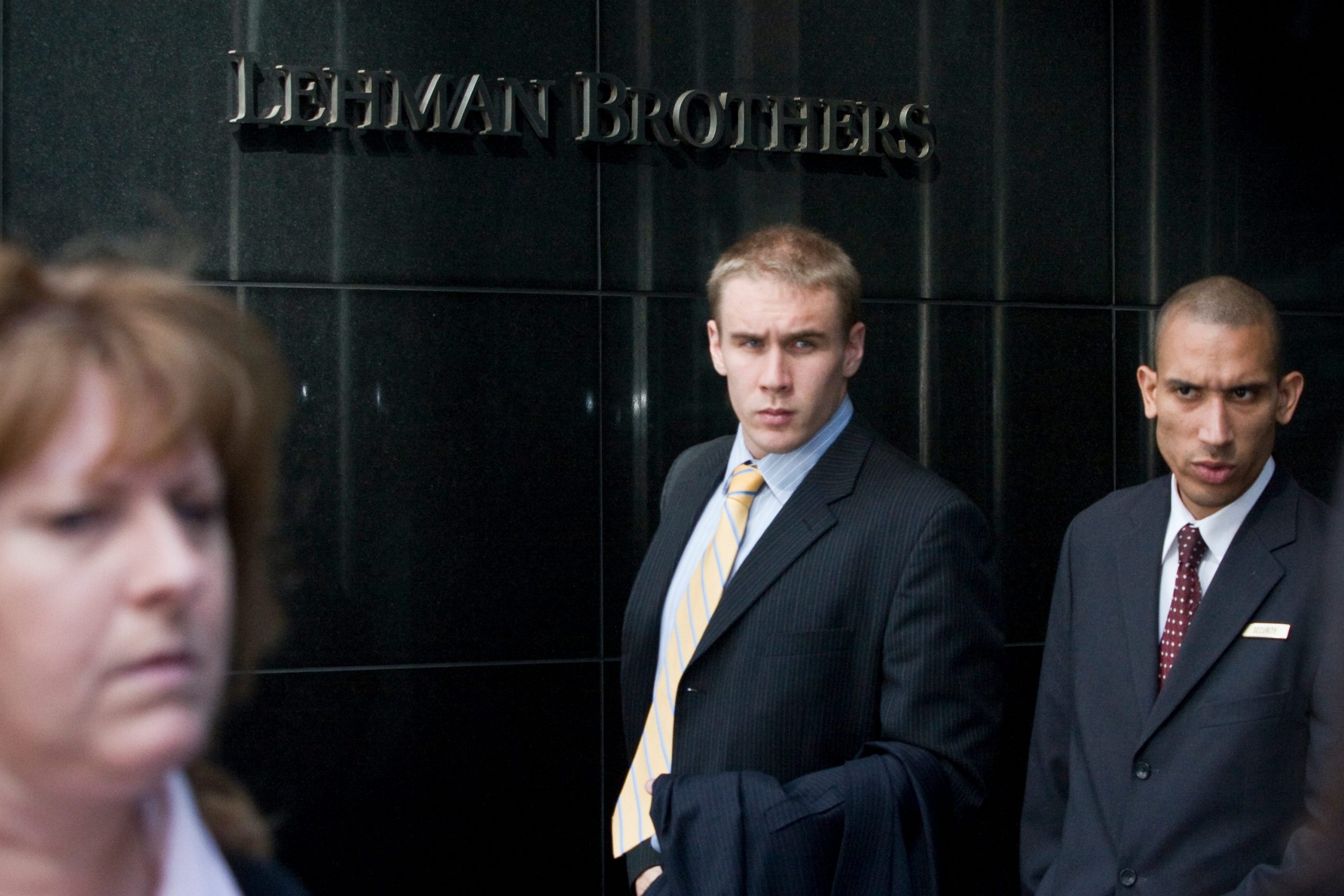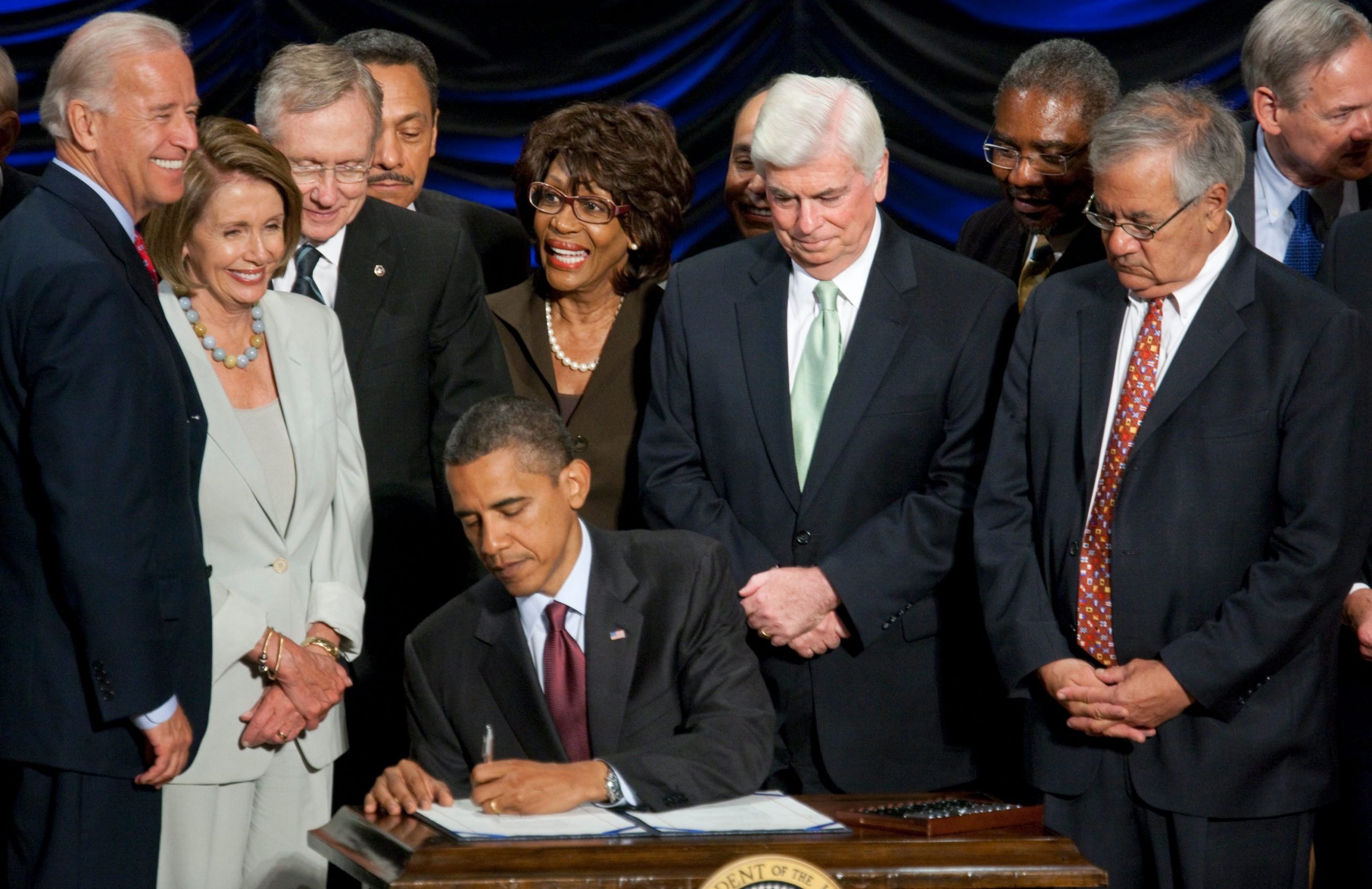
Ariel Skelley/Getty; Alyssa Powell/Insider
- The Great Recession, one of the worst economic declines in US history, officially lasted from December 2007 to June 2009.
- The collapse of the housing market – fueled by low interest rates, easy credit, insufficient regulation, and toxic subprime mortgages – led to the economic crisis.
- The Great Recession's legacy includes new financial regulations and an activist Fed.
- Visit Insider's Investing Reference library for more stories
Many factors contributed to the Great Recession of 2007 to 2009, the second-worst economic crisis in US history.
What caused this economic chaos? Economists cite as the main culprit the collapse of the subprime mortgage market – defaults on high-risk housing loans – which led to a credit crunch in the global banking system and a precipitous drop in bank lending.
But, in fact, the reasons are more complex. According to a 2011 report by the Financial Crisis Inquiry Commission, the Great Recession was an "avoidable" disaster caused by widespread failures, including in government regulation and risky behavior by Wall Street.
While the relative impact of each cause is still debated today, the Great Recession stands as a cautionary tale about risk, investing in what you know, and the dangers of putting full trust and faith in financial experts and institutions.
1. Immoderate investments and deregulation
The two decades before the Great Recession were largely prosperous, with rises in GDP, low inflation, and two relatively mild recessions.
This period - from the mid-1980s up to 2007 - was optimistically called the Great Moderation. The name refers to the contemporary belief that the traditional boom-and-bust business cycle had been overcome in favor of middling but stable economic growth.
However, unbridled optimism led to immoderate spending, especially for risk-loving investors. Everyone from homeowners to bankers believed the economy would keep growing. This made traditionally risky behavior - like aggressive investment and leveraging strategies, plus taking on excessive debt - seem safe.
Assumptions about economic growth also contributed to a period of deregulation, most significantly the 1999 rollback of the Glass-Steagall Act, a landmark Depression-era legislation that separated commercial and investment banking.
Repealing key provisions of the Glass-Steagall Act allowed banks and brokerages to become significantly larger, and opened the floodgates for giant mergers. While just one contributing factor to the Great Recession, the changes to the Glass-Steagall Act brought a period of national expansion for corporations and the gobbling up of small, independent institutions, which created entities that were "too big to fail" - or so everyone thought.
2. Loose lending standards in the housing market
In the decade leading up to 2007, real estate and property values had been rising steadily, encouraging people to invest in property and buy homes.
By early to mid-2000s, the residential housing market was booming. To capitalize on the boom, mortgage lenders rushed to approve as many home loans as they could, including to borrowers with less-than-deal credit.
These risky loans, called subprime mortgages, would later become one of the main causes of the Great Recession.
A subprime mortgage is a type of loan issued to borrowers with low credit ratings. A prospective subprime borrower might have multiple dings on their credit history or dubious streams of income. In fact, the loan verification process was so lax at the time that it drew its own nickname: NINJA loans, which stands for "no income, no job, and no assets."
Because subprime mortgages were granted to people who previously couldn't qualify for conventional mortgages, it opened the market to a flood of new homebuyers. Easy housing credit resulted in the higher demand for homes. This contributed to the run-up in housing prices, which led to the rapid formation (and eventual bursting) of the 2000s housing bubble.
While interest rates at the time were low, subprime mortgages were adjustable-rate mortgages, which charged low, affordable payments initially, followed by higher payments in the years thereafter. The result? Borrowers who were already on shaky financial footing stood a good chance of not being able to make payments when the interest rate rose in the years following.
In the rush to take advantage of a hot market and low interest rates, many homebuyers took on loans without knowing the risks involved. But the common wisdom held that subprime loans were safe since real estate prices were sure to keep rising.
3. Risky Wall Street behavior
Along with issuing mortgages, lenders found another way to make money off of the real estate industry: By packaging subprime mortgage loans and reselling them in a process called securitization.
Through securitization, subprime lenders bundled loans together and sold them to investment banks, which, in turn, sold them to investors around the world as mortgage-backed securities (MBS).
Eventually, investment banks started repackaging and selling mortgage-backed securities on the secondary market as collateralized debt obligations (CDOs). These financial instruments combined multiple loans of varying quality into one product, divided into segments, or tranches, each with its own risk levels suitable for different types of investors.
The theory, backed by elaborate Wall Street mathematical models, was that the variety of different mortgages reduced the CDOs' risk. The reality, however, was that a lot of the tranches contained mortgages of poor quality, which would drag down returns of the entire portfolio.
Investment banks and institutional investors around the world borrowed significant sums at low short-term rates to buy CDOs. And because the financial markets seemed stable on the whole, investors felt secure about taking on more debt.
To make matters even more complicated, banks used credit default swaps (CDS), another financial derivative, to insure against defaults on CDOs. Banks and hedge funds started buying and selling swaps on CDOs in unregulated transactions. Also, because CDS transactions didn't show up on institutions' balance sheets, investors couldn't assess the actual risks these enterprises had assumed.
4. Weak watchdogs
Like corporate bonds and other forms of debt, MBS and CDOs required the blessing of credit rating agencies in order to be marketed. The "Big Three" credit rating agencies include Moody's, S&P, and Fitch Group.
These agencies placed AAA ratings - usually reserved for the safest investments - on many securities, even though they contained a healthy share of risky mortgages.
It's worth noting that credit rating agencies are supposed to be independent. But an inherent conflict of interest seems to have existed since the banks issuing the securities were the ones paying the agencies to rate them.
5. The subprime mortgage crisis
After staying low throughout the early 2000s, interest rates began to rise starting in 2004 in response to an overheating economy and fears of inflation. In mid-2004, the federal funds rate was 1.25%. By mid-2006, the interest rate was 5.25%.
The rate-hike could not have come at a worse time.
By mid-2006, home prices were peaking and the market was slowing down. When supply started to outpace demand, home prices spiraled. The combination of high interest rates and falling home prices made it extremely difficult for buyers to make payments on their homes.
As a result, defaults on subprime mortgages shot up. Loan after loan became worthless. In April 2007, New Century Financial, the largest independent provider of subprime mortgages, declared Chapter 11 bankruptcy.
The subprime mortgage crisis had begun. And because of CDOs, the collapse was soon felt beyond the real estate industry.
The defaults meant big CDO investors, like hedge fund managers, investment banks, and pension funds, saw the value of the investments nosedive. Since CDOs didn't trade on any exchanges, there was no way to get rid of them, so those holding them had to write off a substantial amount of their value.
Those who had committed heavily in CDOs saw their entire balance sheets decimated. One of the biggest: investment bank Bear Stearns. After the bank suffered massive CDO-based losses, it lost investors' confidence - and its ability to borrow money. In March 2008, to avoid bankruptcy, the venerable firm sold itself to JP. Morgan Chase for $10 per share.
6. The 2008 stock market crash

James Leynse/Getty Images
By the spring of 2008, the CDO debacle turned into a full-blown credit crisis. Since it was unclear where all these toxic securities were - given all the packaging and repackaging - and whose balance sheets were harboring them, banks started charging high interest rates to lend to other banks and institutions.
It was especially disastrous for investment bank Lehman Brothers. In fact, of the $600 billion in debt owed by the company, $400 billion was supposed to be covered by CDS. Unfortunately, by that point, the debt was worth almost nothing.
When Lehman collapsed, declaring bankruptcy on September 15, panicked banks stopped lending almost completely and the entire global banking system became short of funds.
The stock market reacted sharply. From September 19 to October 10, 2008, the Dow Jones Industrial Index went into free-fall, declining 3,600 points.
During that time, big financial institutions started dropping:
- Bank of America (BAC) announced it was buying Merrill Lynch.
- The FDIC seized Washington Mutual, the country's largest savings and loan, transferring its assets to JPMorgan Chase.
- Goldman Sachs and Morgan Stanley, the last two of the major still-intact investment banks, converted to bank holding companies, the better to be able to obtain federal bailout funding.
With the global economy declining, international trade and industrial production fell at an even a faster rate than during the Great Depression of the 1930s. As consumer and business confidence was shattered, companies started massive layoffs and unemployment skyrocketed globally.
The Great Recession was in full force.
Federal response to the Great Recession
Decisive action by the Federal Reserve, along with massive government spending, kept the US economy from total collapse.
Aiming to boost borrowing and capital investment, the Fed reduced interest rates to zero for the first time ever and launched a quantitative easing program, whereby it bought financial assets to add more money into the economy.
As for the federal government, it creating two key programs aimed to provide emergency assistance:
- Troubled Asset Relief Program (TARP): This initiative helped stabilize the economy by having the government purchase up to $700 billion in toxic assets, with most of the money used to bail out troubled banks.
- The American Recovery and Reinvestment Act (ARRA): A stimulus package enacted in 2009, ARRA implemented a series of tax cuts, government spending mandates, loan guarantees, and unemployment benefits to help kickstart the economy.
These measures were effective, preventing the recession from developing into a decade-long affair, like the Great Depression. The stock market began to rebound in 2009. Still, other aspects of the economy took several years to recover - what economists characterize as an L-shaped recovery.
Aftermath of the Great Recession

Brooks Kraft/Getty Images
The Great Recession officially lasted through June 2009, but its effects have had a lasting impact.
- GDP didn't regain its pre-recession strength until 2011.
- Unemployment remained above 5% until 2015.
- Real household income didn't increase until 2016.
The policies, reforms, programs and impact of the Great Recession are still with us today. Among the Great Recession's legacy:
Financial regulation and reform
In 2010, President Obama signed the Dodd-Frank Act into law, which aimed at reforming regulation of the financial industry. Some highlights include the ability for the government to take control of banks seen to be fiscally unsound, regulation of the over-the-counter derivatives market, including credit default swaps, and a requirement for banks to set aside more capital reserves as a cushion. It also included the Volcker Rule, which curbed banks proprietary trading for their own accounts and limited their dealings with hedge funds and private equity funds, among other steps.
An activist Fed
Interest rates were at 5.25% in 2007. But by the end of 2008, the Fed slashed them to zero. Those low interest rates and swift, strong action to keep the economy moving are still hallmarks of the Fed today. For example, it moved quickly to lower interest rates in response to the economic turmoil caused by the COVID-19 crisis.
Hobbling of a generation
The generation that came of age at the worst of the crisis, Millennials still feel the effects of the Great Recession. They have decreased savings and heavy student loan debt. They have a reluctance to buy homes and overall less wealth than previous generations at a comparable age. A 2019 Country Financial survey revealed that half (50%) of Millennials rate their level of financial security as fair or poor, compared to 44% of Americans overall.
The financial takeaway
The Great Recession stands as one of the worst economic meltdowns in US history. Although the subprime mortgage crisis was the immediate cause, multiple interconnected financial factors caused the specialized-industry bubble burst to ripple out, bankrupting firms, crashing the stock market, and hobbling the whole economy.
